
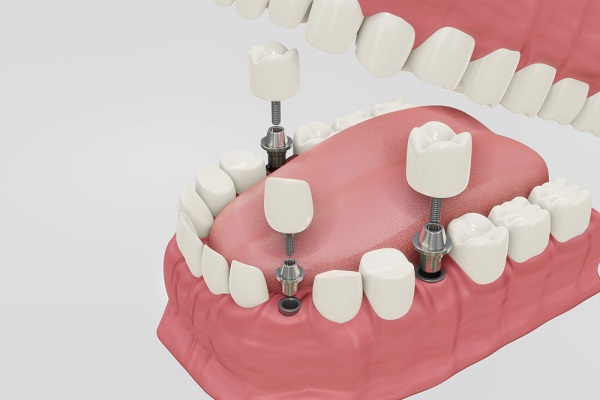
When it comes to replacing your missing teeth, every patient desires the best, affordable and long-lasting option! Conventionally, the dental patients had an option of either a fixed bridge or partial or complete removable dentures to fill the missing gap. The fixed bridges come with the cost of cutting the adjacent healthy teeth on both sides of the missing space whereas the removable dentures lack stability. Dental implants are the newest, most reliable, long-lasting, and best possible option to replace the missing tooth or teeth these days!
The dental implant consists of two parts. The screw-like portion which is actually an implant is drilled in the jaw bone which acts like the tooth root and the artificial cap which is cemented over the implant above the gum level. This entire structure is called a ‘dental implant’ and is the closest possible option that resembles the natural tooth. There is no chance one can make out if the replaced tooth is artificial or natural. What else could you possibly ask for? Dental implants have almost 80% success rate and patients should consider implants as a potential option for missing teeth replacement.
Let’s dive into different types of dental implants and know, how a Dentist selects the best possible dental implant for you!
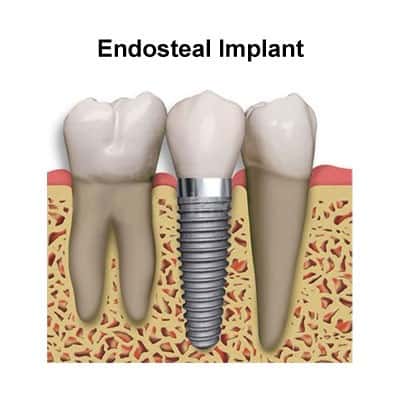
Endosteal literally means inside the bone! Endosteal implants are the most common and frequently placed dental implants by dentists. These types of dental implants are embedded in the jaw bone. They are usually made up of titanium material and are shaped like screws. The screw-like design provides excellent and firm support to the entire prosthesis. An abutment is then attached to this screw which projects above the gum level to receive the final crown or cap. In simple terms, an abutment serves as a connector between the embedded screw or implant and the cap. The embedded implant takes anywhere between 2-6 months to completely integrate into the jaw bone after which the cap is attached.
Endosteal implants are most suitable to patients who have recently undergone tooth removal or in the case where there is a single or multiple missing teeth or even no teeth present in the mouth. These implants are usually an artificial replacement for the missing teeth in the mouth.
with endosteal implants, the bone height, width, and density are well maintained. Keeping the above-mentioned factors in mind, patients who have undergone or planning to remove their tooth are ideal candidates for the endosteal types of dental implants.
Brands of endosteal implants-
Nobel Biocare, ossteum, Bio horizon, Dentsply Sirona
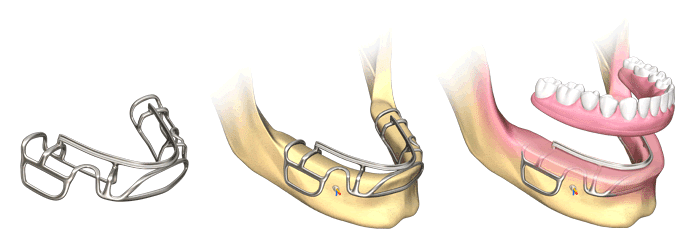
Subperiosteal implants are a little different. They are not drilled in the bone directly but they rest on the bone. Even though they are not directly drilled inside the bone they are sufficiently below the gum region. Since subperiosteal implants are not embedded in the jaw bone their structure is slightly different than the endosteal implants. These implants consist of a metal frame that rests on the bone and has numerous small posts or projections which then receive the cap or bridge or even dentures.
Subperiosteal implants are indicated where the jaw bone is extremely weak and lacks sufficient height and mass to receive the embedded type of implant. Very senior citizens or diabetic people having deficient jaw bone due to resorption of bone are the ideal candidates for subperiosteal implants. In such cases, a denture over a subperiosteal implant is much more favorable and is more stable than the removable dentures.
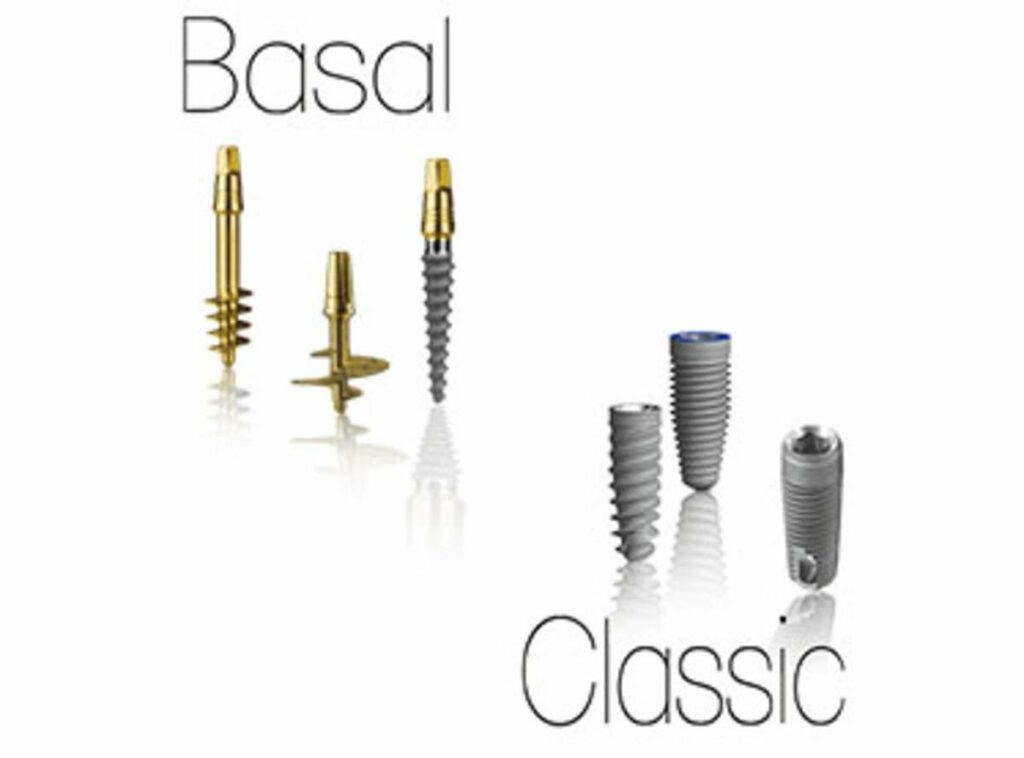
Basal implants differ from the rest of the implant systems in terms of their location, manner of placing, shape, and design, and the way they distribute forces evenly. Basal implants are placed in the lower part of the jaw bone called as basal bone which is considered as the strongest bone. The basal bone is least susceptible to any oral infections and weakening or resorption and hence is considered the ideal site for implant placement. The basal implant placement surgery is generally minimally invasive and gives minimum post-operative swelling or any complaints and hence has the fastest recovery. So fast that the final crown can be cemented even within 3 days.
As the traditional implants are fixed in the soft jaw bone (trabecular bone), any patient who is deficient in the soft jaw bone or has undergone extreme attrition of jaw bone is best suited for basal implants.
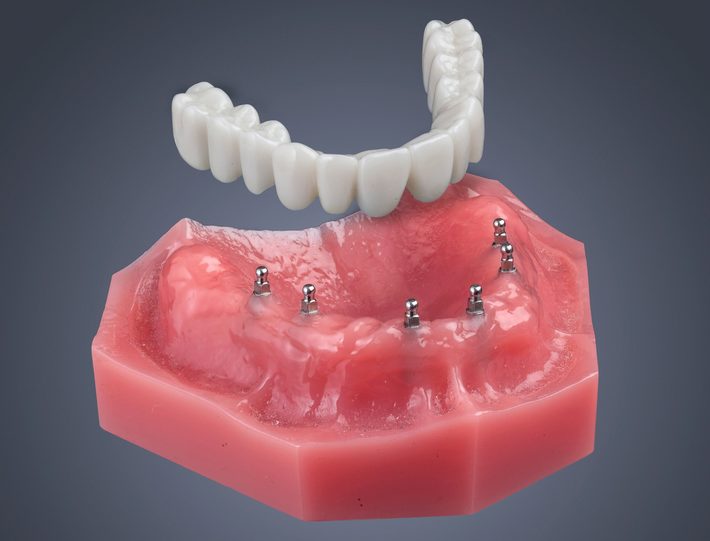
Jaw bone loss is an inevitable part of physiologic aging. That means there is always a loss of some amount of jaw bone with aging. And these types of dental implants need a solid jaw bone mass so that the implants are stable. So, what are the options in such cases? Well, the answer is mini-implants. Mini-implants are literally the miniature version of standard implants that support the main implant and provide stability. They are somewhat of the size of a toothpick since the diameter is less than even 3mm and the height is also small. Mini-implants are also made up of titanium and are less expensive as compared to standard implants.
As the name suggests, mini-implants are suitable for patients with small teeth, or where conventional implants cannot be placed. Also, long-term denture-wearing patients where the jaw bone has undergone considerable attrition are ideal for mini-implants.
Dental implants for certain complex conditions
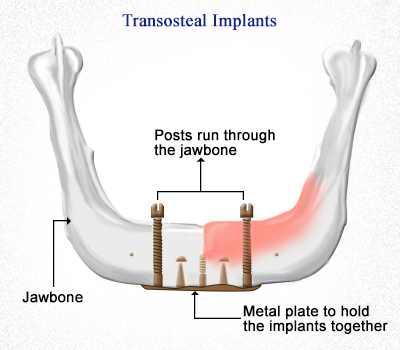
The lower jaw bone of our body has a tendency to wear off very fast. As a result, the fabrication and stability of a denture continue to be a challenging task for dentists. But the Transosseous implants have given new hope to such patients. These implants consist of a metal frame that is embedded in the lower border of the lower jaw(mandible). Small posts are attached to this frame which then connects to the denture and thus the denture is seated well. Transosseous implants are considered for patients who have severe resorption of the lower jaw bone(flat gum pads of the lower jaw) where the other type i.e endosteal or subperiosteal type of implants cannot be placed.
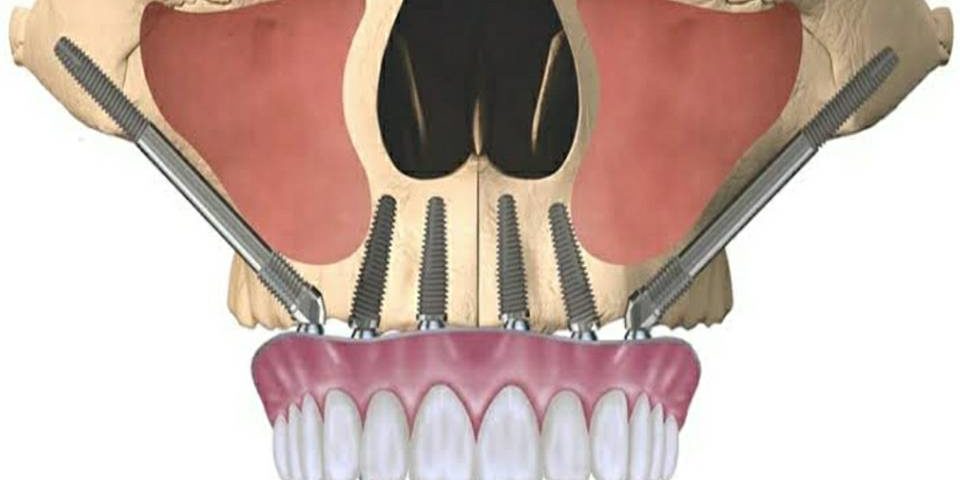
Similar to lower jaw resorption the upper jaw at times is also deficient and lacks sufficient height and width to receive the conventional implants. In such cases, the zygomatic implants present a great option for restoration. Zygoma is the cheekbone and zygomatic implants are literally placed in the cheekbone. Zygomatic implants are the newest treatment modality and are not routinely done since it requires extensive training and experience from a Dentist. Oral and Maxillofacial surgeons and plastic surgeons undergo training to deal with such implants and cases.
Zygomatic implants are placed in patients where the upper jaw is partially removed because of cancer or in trauma or fracture cases.
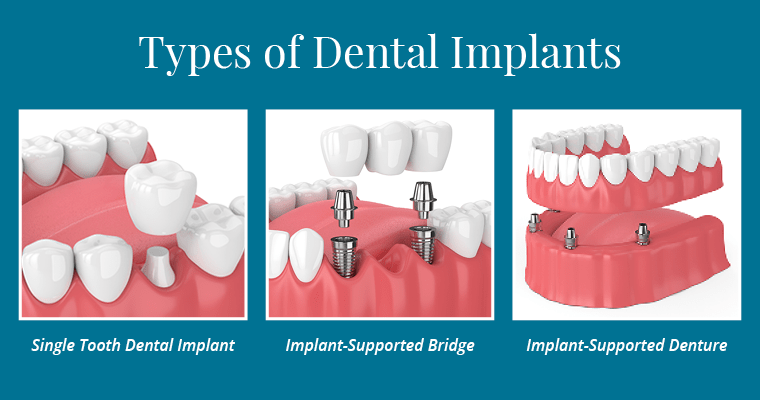
The all-on-four dental implants have created a storm in dental practices. The all-on-four implants consist of placing either only 4 or 6 implants in the upper and lower jaw bone and then a long bridge is fabricated over it. They are called fixed implant bridges. The ideal candidates are completely edentulous patients ( no teeth present in the mouth) soon to receive a removable complete denture.
Highlights
scanO is an AI ecosystem transforming oral health for patients, dentists, corporates, and insurers worldwide

© 2025 Trismus Healthcare Technologies Pvt Ltd